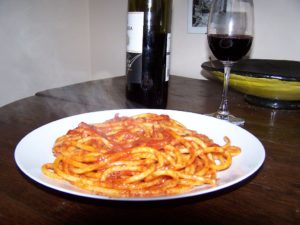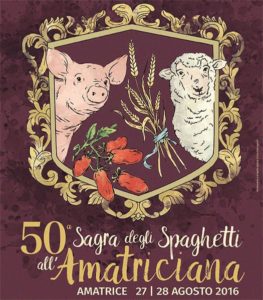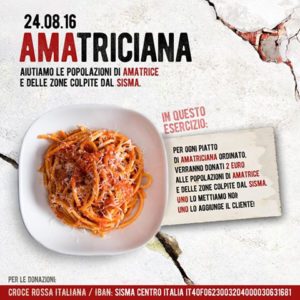 August 24, 2016 3:36 AM: Aglioni, Borgo of Capitignano (L’Aquila): I felt a heavy dull thud. Then I heard my husband Luciano calling me: “Lucy, hurry, wake up, this is an earthquake. Quick.” When I opened my eyes I saw that he was nervously pulling up his blue jeans, so I said, “But where are you going, it’s still dark out.” It wasn’t until I went down a few steps and saw the kitchen light fixture swinging from side to side, that I knew he was right. During my 45-years of marriage, I’ve felt many earthquakes in Assisi and in Rome, but this one was more threatening. I didn’t even know yet that the epicenter was only fifteen miles away. Outside we huddled with neighbors until my husband and I went back to bed in the new “earthquake-proof” wing of our house. As I said, this earthquake was different, not just because of its closeness, but because within hours I had received messages asking for news from San Francisco, Chicago, New York, Dallas, London, Munich, Zagreb, and the Maldives. Flashback: April 6, 2009 3:32 AM Rome: Our bed slid back and forth across our bedroom. Our five-story apartment building with over 20 apartments shook and swayed. The next morning we were supposed to go to Aglioni for three months while work was being done to our Rome home. We stayed in Rome with our daughters.
August 24, 2016 3:36 AM: Aglioni, Borgo of Capitignano (L’Aquila): I felt a heavy dull thud. Then I heard my husband Luciano calling me: “Lucy, hurry, wake up, this is an earthquake. Quick.” When I opened my eyes I saw that he was nervously pulling up his blue jeans, so I said, “But where are you going, it’s still dark out.” It wasn’t until I went down a few steps and saw the kitchen light fixture swinging from side to side, that I knew he was right. During my 45-years of marriage, I’ve felt many earthquakes in Assisi and in Rome, but this one was more threatening. I didn’t even know yet that the epicenter was only fifteen miles away. Outside we huddled with neighbors until my husband and I went back to bed in the new “earthquake-proof” wing of our house. As I said, this earthquake was different, not just because of its closeness, but because within hours I had received messages asking for news from San Francisco, Chicago, New York, Dallas, London, Munich, Zagreb, and the Maldives. Flashback: April 6, 2009 3:32 AM Rome: Our bed slid back and forth across our bedroom. Our five-story apartment building with over 20 apartments shook and swayed. The next morning we were supposed to go to Aglioni for three months while work was being done to our Rome home. We stayed in Rome with our daughters.
A little over a year ago, Carlo Cracco, one of Italy’s most celebrated chefs with 2 Michelin stars and two restaurants in Milan, created a gastronomic uproar. During an interview on “C’è posta per te”, one of Italy’s most popular talk shows, he included garlic as an ingredient of spaghetti all’amatriciana. Infuriated by such a sacrilege, the residents of Amatrice, a town some 60 miles northeast of Rome in the mountains of Latium near the border with the Abruzzi and the reputed birthplace of this world-famous pasta dish, took to the internet to defend the garlic-less “authenticity” of their hometown gastronomic namesake and signature dish. Even the deputy mayor Piergiuseppe Monteforte declared: “The only ingredients in a real amatriciana are guanciale (cured spiced pork jowl), pecorino cheese, white wine, San Marzano tomatoes, black pepper and chili. If you use ingredients like garlic or onion in an amatriciana, it means that you are ignoring a pastoral tradition that is almost 1,000 years old, passed from generation to generation.”
The disagreements about the ingredients of all’amatriciana, Italy’s most popular pasta dish, don’t stop with onions and garlic. Some appassionati don’t include pepper because it’s not native and until recently was a luxury; others for the same reason don’t include tomatoes; still others insist on using bucatini for their hollow tubular more rustic shape and not spaghetti. Tonnarelli and rigatoni are also tolerated.
Some purists go as far to say that its birthplace is not Amatrice, but Rome, named for the city’s Grici or sellers of bread and other comestibles, who were so called because a large number of them emigrated from the Swiss canton of Grisons. According to another and more likely hypothesis, the name originates from the hamlet of Grisciano, in the municipality of Accumoli. In all likelihood it is now considered a classic of Roman cuisine because of all the immigrants from this rural area of Latium who opened restaurants in the Eternal City during the 1950s and 1960s.
Although “Romans” by now, many return each August for vacation, family reunions, and the annual sagra (festival) degli spaghetti all’amatriciana, when the town’s population swells from 2,000 permanent residents to 20,000. Until disaster struck on August 24th at 3:36 AM, this extremely popular Festival was to celebrate its 50th birthday on August 27th and 28th. Only four hours after the devastating earthquake on August 24th which killed nearly 300 people and razed Amatrice and Accumoli to dust,  Paolo Campana, a graphic designer and blogger (Bloggokin.it), launched on Facebook the idea that Italian restaurants worldwide and their clients should donate to the Italian Red Cross a euro each for each portion of all’amatriciana consumed to help the relief effort now and the reconstruction of the all but destroyed area of central Italy. “My idea was inspired by emotion, he said. “I live in Rome, but usually spend New Year’s in Amatrice. We also used to go there often to eat. I knew a lot of the places, like the Hotel Roma, which for four generations had offered the world’s top authentic all’amatriciana. I saw them on TV in ruins. I felt the 3:36 tremor. I couldn’t sleep afterwards, but it wasn’t until 8 AM, when I was drinking my coffee, that I got the idea of solidarity and published it on my Facebook profile. Almost immediately support starting pouring in from everywhere. It’s easy to participate. I’m going to open a Facebook page listing all the participating restaurants. Donations should go to the Italian Red Cross. That way I’m sure they’ll arrive at their destination.”
Paolo Campana, a graphic designer and blogger (Bloggokin.it), launched on Facebook the idea that Italian restaurants worldwide and their clients should donate to the Italian Red Cross a euro each for each portion of all’amatriciana consumed to help the relief effort now and the reconstruction of the all but destroyed area of central Italy. “My idea was inspired by emotion, he said. “I live in Rome, but usually spend New Year’s in Amatrice. We also used to go there often to eat. I knew a lot of the places, like the Hotel Roma, which for four generations had offered the world’s top authentic all’amatriciana. I saw them on TV in ruins. I felt the 3:36 tremor. I couldn’t sleep afterwards, but it wasn’t until 8 AM, when I was drinking my coffee, that I got the idea of solidarity and published it on my Facebook profile. Almost immediately support starting pouring in from everywhere. It’s easy to participate. I’m going to open a Facebook page listing all the participating restaurants. Donations should go to the Italian Red Cross. That way I’m sure they’ll arrive at their destination.”
Apparently independently, Foodiamo, an Italian-food-focused website, is also organizing a similar fundraising campaign as are the mayor of Assisi and the Italian Red Cross. Carlo Petrini, the founder of “Slow Food”, also jumped on the bandwagon and promised to make it an international quest. Instead of the Italian Red Cross, donations to his initiative will go directly to municipality of Amatrice: IBAN (International Bank Account Number) IT28M0832773470000000006000. Still other enthusiasts on social media are trying to organize a virtual sagra.
